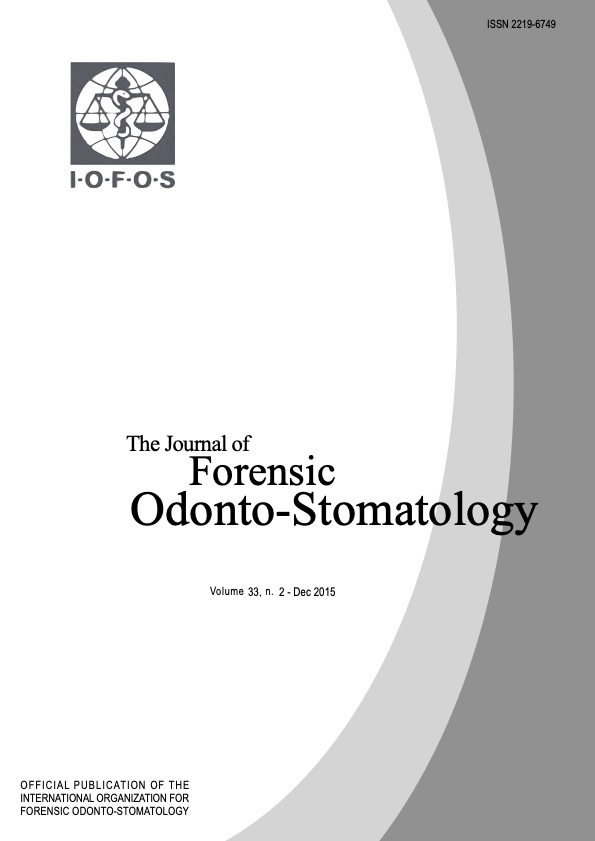Dental Patterns in Peruvians: A Panoramic Radiography Study
Keywords:
Forensic Dentistry, Panoramic Radiography, Human Identification, Forensic AnthropologyAbstract
The dental pattern is defined as the combination of distinct codes assigned to describe specific tooth conditions including virgin, missing, and restored teeth that comprise the complete dentition or from discrete groups of teeth. This pattern can be then compared to the dentition of individual/s in an attempt to determine positive identification. The aims of the present investigation were to study and determine the diversity of dental patterns in Peruvian citizens based on a sample of panoramic radiographs. Digital panoramic radiographs of 900 adult Peruvian patients (450 female and 450 male) were evaluated to determine the dental patterns. The most frequent dental patterns found in the complete dentition, maxillae, upper-anterior and lower-anterior sextants were all-virgin-teeth (0.3%), all-extracted teeth (1.9%), all-virgin teeth (1%) and all-virgin-teeth (34.2% and 72.3%) respectively. The diversity was calculated by the use of the Simpson´s diversity index, the resulting values for the full-dentition, maxilla and mandible were over the 99.8% value and were similar to those previously reported in the scientific literature. This study demonstrates the positive benefit of dental patterns in the process of identification. Additionally a combination of codes is proposed that could prove useful in cases where a better radiographic description is required.

